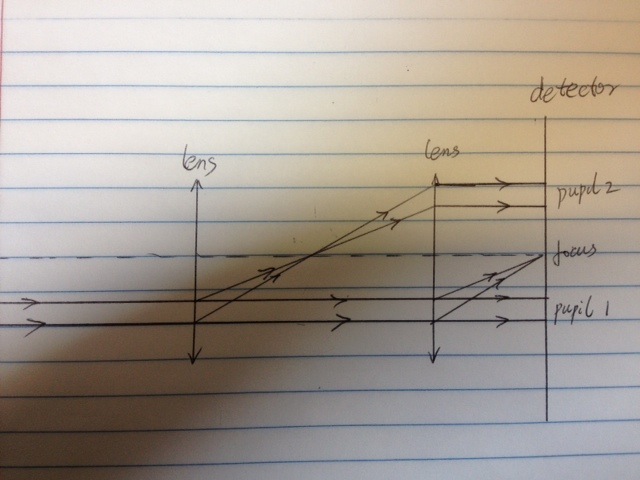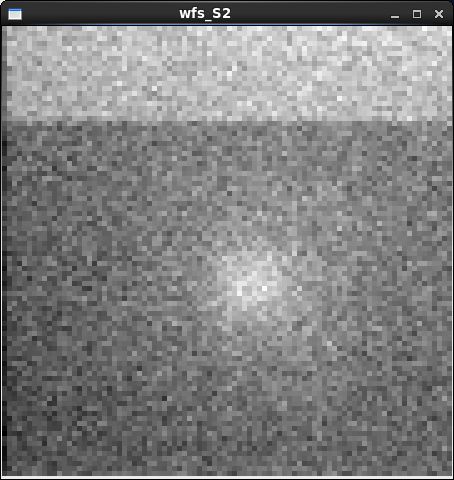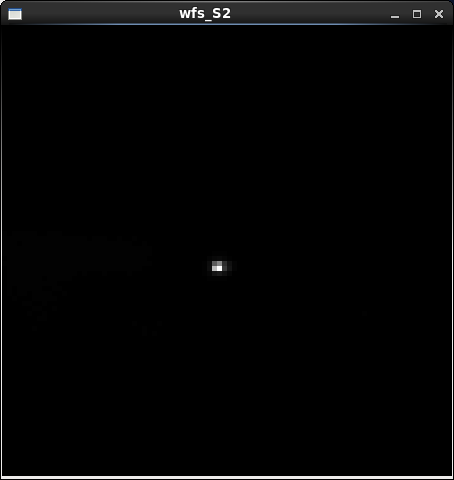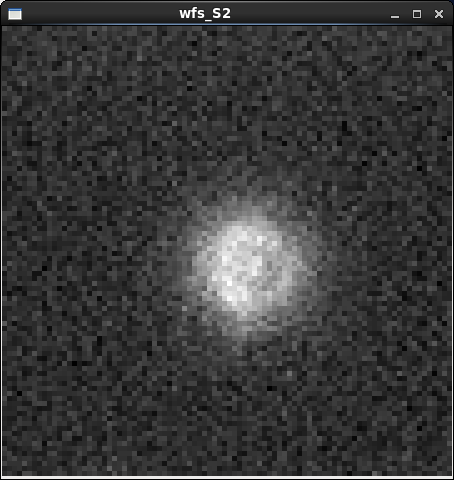Lab alignment procedure
1. make sure the input collimated beam is parallel to table:
1a. put an iris in front of the beam to shrink the laser beam size to ~1mm
1b. iteratively place the same target at two places along the beam, the two places have to be far apart for high precision
and the connection of the two places has to be parallel to the table
1c. adjust the tiptilt of the mirror to make sure the beam hit the same position of the target at the two places. The last
mirror is for fine adjustment for target at farther position, and the second to last mirror is for coarse adjustment for the target
at closer position.
2. make sure the home-made front metal panel is perpendicular to the beam.
2a. assemble the metal pieces, no lens or camera.
2b. open the iris to be about 5 mm
2c. use the edge of a rectangular card to block half of the beam, and let the other half pass through
2d. put a flat mirror tightly against the front metal panel (I used one hand to hold and push the mirror) to reflect the passed-through
half beam
2e. loose the four screws that tight the metal baseplate to the linear xyz stage. Rotate the whole metal piece so that the reflected half beam
matches the blocked half beam horizontally (meaning they become a circle, but it is not true if they are not vertically aligned)
2f. If the reflected beam and blocked beam don't match vertically, we can put some shims between the triangles panels and the front metal panel.
But I didn't find it necessary this time.
3. align the center of the beam to the center of the threaded hole of the front metal panel (rough)
3a. put a second iris close to the camera (theoretically you can first iris, but it is too far away to reach), and beam size small ~1mm. And fully
open the first iris.
3b. put the cylindrical target into the hole of the front metal panel. Note, the target doesn't tightly fit into the hole, it can be shaken, that's why
this step is rough.
3c. move the second iris to put the laser beam at the center of the target.
4. align the beam with the camera
4a. attach the camera to the front metal panel
4b. install the first reimaging lens, you should be able to see a spot on the detector. Then loose
the screws on the camera, try to move the camera to put the spot at the center
of the final readout area. the readout size should start with full frame so that you can see where the spot is on the detector. Note: we are in crop mode, so if you see
light in a subarray readout, this doesn't mean the light is really in the subarray area. That's why you want to start out with full frame.
4c. Then take out the lens, you will be see a pupil on the detector. try to move the linear xyz stage of the camera to move the center of the pupil to match
where the spot was.
4d. put on the lens again to check if the spot has moved. If it has moved a little, iterate the above steps to get the spot match the center of the pupil.
Here is my understanding of how this step works.

5. align the reimaging lens pair with the camera.
5a. Then put on the second lens, you will see the pupil again on the detector. The center of the pupil should automatically
match the spot.


